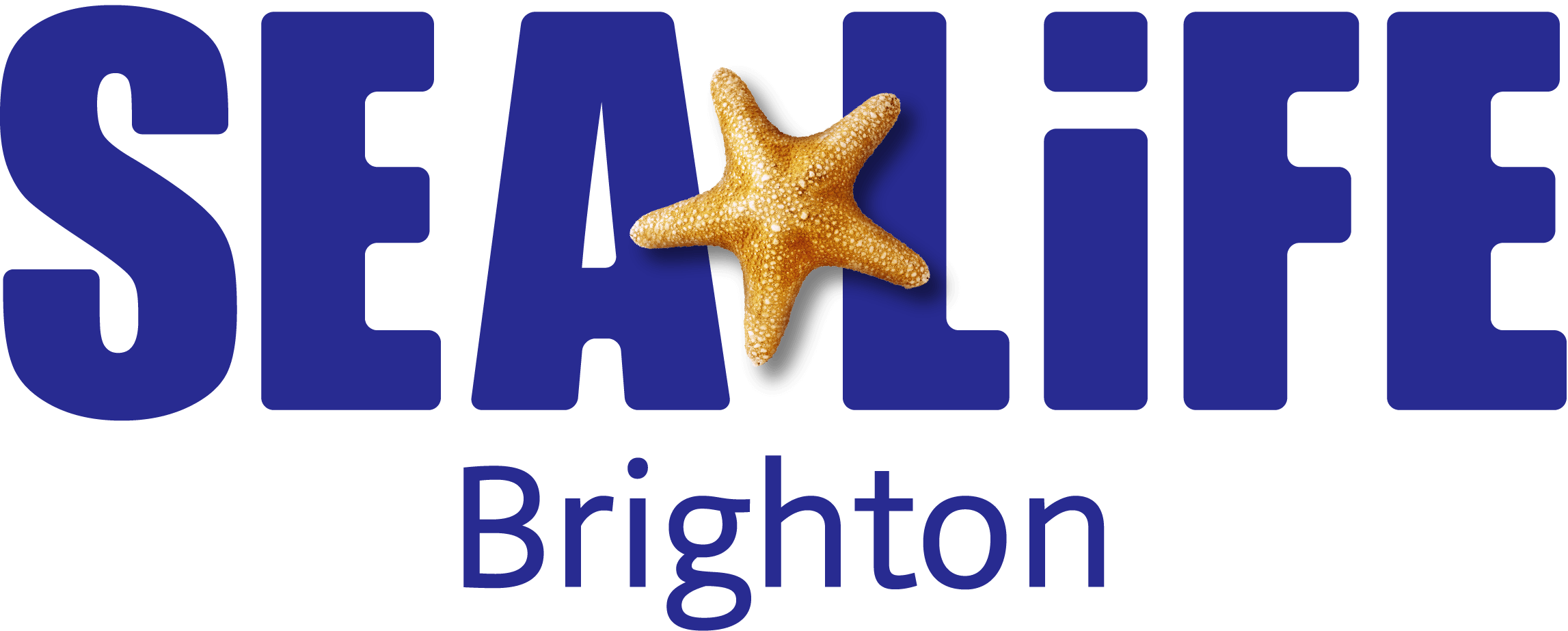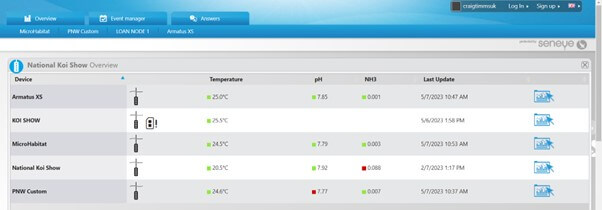No matter your application, manual water quality testing takes up significant amounts of staff time that could be used more productively elsewhere.
Seneye sensors are easy to install and require minimal maintenance. The recorded water conditions of their generation 1 sensors include:
These data points are sent remotely to your office or mobile device to give you actionable data, identify patterns and detect and alert anomalies without time-consuming and potentially less accurate on-site manual tests.
Whether you are operating a public aquarium or aquaculture facility or responsible for monitoring wastewater or combined sewerage outlets (CSOs), by removing the need to test the water in person, Seneye sensors let you focus your staff resources on the areas where they can benefit most, like animal welfare and environmental protection, saving money and boosting productivity.
How Seneye Sensors Save Time
Monitoring water parameters has traditionally involved using test kits with questionable accuracy or delicate electronic devices that required careful, expert calibration and expensive maintenance. These processes are incredibly time-consuming and require an operative to be in situ to take the readings.
Factor in testing multiple parameters and taking them in different locations, and you can use serious staff hours and resources. In addition, to use the data to detect problems or patterns, you need to collate, record and assess it, adding further to your overhead.
Our IOT devices automatically wirelessly upload readings to the cloud without human interaction, giving you considerably more accurate and up-to-date data than possible with manual testing.
In addition, the Seneye system lets you track changes and will raise the alert if any parameter falls outside its designated range. Employing Seneye sensors means you’re warned earlier about potentially catastrophic events rather than discovering them when the next manual test is scheduled.
Case Study: Sealife Brighton - Too Many Tanks to Monitor by Hand

Sea Life Brighton opened in 1872 and the UK’s oldest public aquarium and the longest continually operating aquarium in the world.
The aquarium was conceived and designed by the same architect responsible for Brighton’s iconic West Pier, and while the Victorian building is charming, the age and layout of the site present unique challenges to the dedicated staff who manage the facility and care for the multitude of freshwater and marine inhabitants.
Unlike modern public aquariums designed with centralised filtration systems to look after multiple aquariums, Sea Life Brighton predominantly features standalone tanks that can be incredibly time-consuming to monitor and maintain.
Too Much Data to Record Manually
Public aquariums need to comply with Zoo Licensing Regulations, which demand that water quality data is continually measured and recorded for each display.
In addition, aquarists must document how they addressed any issues discovered, identify what was responsible, and outline preventive measures for the future.
Traditionally, monitoring the various parameters involved manually using multiple test kits. This process was incredibly time-consuming when dealing with over 60 different aquarium displays and relied on potentially inaccurate human perceptions of the test results.
In the often confined back-of-house environment of the Victorian aquarium, testing for something as straightforward as pH required thousands of hours of staff time each year to cover all the exhibits, let alone record and analyse the results.
Clearly, SeaLife needed a more efficient testing system.
Seneye and SeaLife - Focusing on Aquarium Husbandry
Seneye collaborated with Sealife to deploy IOT testing devices across the Brighton aquarium to efficiently monitor vital water parameters, including ammonia (NH3), pH, temperature, and water level.
The Seneye monitors automatically upload readings to the cloud every half an hour to increase testing frequency while eliminating potential human error from the process. Furthermore, the system promptly alerts aquarium staff if any parameter falls outside its designated range to prevent potentially catastrophic events.
The Seneye Dashboard makes analysing the immense volume of data generated by continuously monitoring 60 separate aquariums incredibly straightforward. The intuitive online system is accessible to all relevant staff members and can be viewed by the Zoo License vet responsible for regulatory oversight.
Seneye’s ability to adapt and customise its monitoring systems demonstrates a versatility rarely found in such an economical package. By switching their monitoring from manual to automated, Sealife staff could focus their efforts on providing exceptional care and enhancing the lives of the aquarium’s diverse inhabitants.

In Conclusion
Seneye water testing devices can be applied in various aquatic environments, including monitoring wastewater, combined sewerage outlets (CSOs), aquariums and aquaculture facilities.
Tailored solutions are available that benefit both the operators and the governing authorities while also, vitally, assisting to improve animal welfare and environmental protection.
By removing time-consuming manual testing, Seneye lets you improve accuracy, save considerable staff hours and focus resources on more critical areas.
